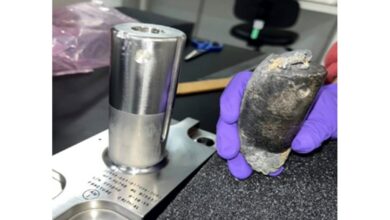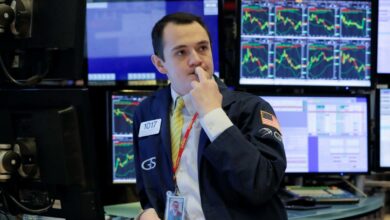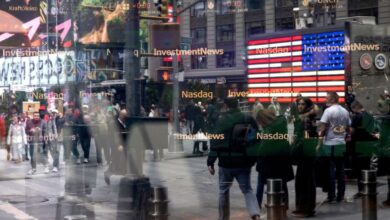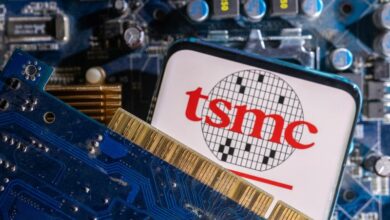AI could be critical to feeding a growing global population—and big brands are taking notice
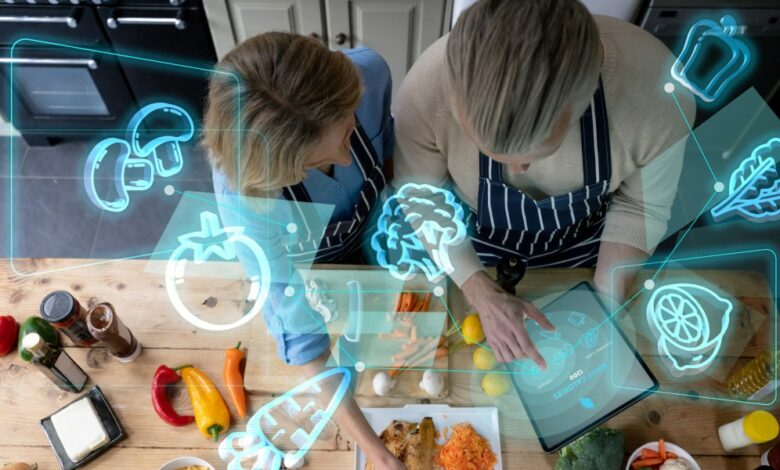

Nearly three years ago, when Unilever developed a zero-salt bouillon cube for the company’s Knorr brand, it had to design a new formulation without a key ingredient that is a massive contributor to taste and gives critical structure to the dehydrated broth.
To predict the best combination and concentration of ingredients for the new stock cubes sans salt, Unilever leaned on artificial intelligence.
“Creating a zero-salt bouillon cube that will still have an acceptable taste for consumers is where predictive modeling has been super, super helpful,” says Carla Hilhorst, chief research and development officer for Unilever’s nutrition business. AI helped design the formulation of the zero-salt bouillon cube, as well as the way it would be produced on the company’s manufacturing line.
The world’s largest food companies for decades have leaned on AI, and in recent years they have been accelerating their embrace of the technology, including newer use cases for generative AI. “CPG [consumer packaged goods] and retail have been using AI to do a host of things, including the ability to better predict demand,” says Michelle McGuire Christian, chief commercial officer of ConvergeConsumer, a collaborative initiative between Deloitte and Google Cloud. “They’ve been using it to optimize the supply chain for a long time,” she added, including the merchandising and placement of products within a store.
Unilever’s AI models are used to help predict taste, consumer preferences, and microbiological stability, as well as determine if a product can run on a factory line. By using AI, the time needed for product development can go from months to just a few days. “The data-enabled decision-making allows you to find more of the sweet spot,” says Hilhorst. “You can be more precise.”
Other AI innovations include Hellmann’s vegan mayo, for which Unilever used advanced modeling to predict the taste, texture, and stability of a product that would omit egg. AI has helped lessen Unilever’s food waste. For Hellmann’s squeeze bottles, a thin layer of oil coating was added to the interior of the package so that only one to two servings of mayo would remain in the container, versus an average of around five before AI formulation predictive models were utilized.
AI also helped Unilever pivot after Russia invaded Ukraine and the company had to quickly configure alternative formulations for ingredients that became difficult to procure, including sunflower oil.
Athina Kanioura, PepsiCo’s chief strategy and transformation officer, says the snacking giant has used more “traditional” forms of AI for years, ranging in use from innovation, to planning with suppliers, to the optimal routes drivers should take when delivering products. The company is also starting to test generative AI for several parts of PepsiCo’s business, including software development, handling queries to call centers, and food formulations.
PepsiCo has developed internal standards to ensure everyone who uses AI does so safely. “We have the infrastructure that sits in our environment where we can give access to the sandbox of AI for people to test the different capabilities,” says Kanioura.
And with the world of snacking constantly evolving, PepsiCo says AI can help synthesize what consumers want at a faster pace, while also solving the best path forward to develop those foods and beverages across the supply chain. At the heart of those flavor development decisions, PepsiCo stresses, are human insights. “The next big thing didn’t come from the tech, it came from the consumers,” says Kanioura.
PepsiCo says the company’s AI efforts are focused on efficiency and growth, not expenses. “I’m not in a rush to drive cost optimization from gen AI,” says Kanioura.
“AI is going to help us get the levels of accuracy and speed that we haven’t had in the past,” says Anton Vincent, president of Mars Wrigley North America. “We’re hopeful that as we start to think about taking complexity out, AI is going to be a big driver for us.”
The candymaker says it has used AI for several years to help with sourcing, manufacturing, and digesting industry data to determine trends in the food industry. As for large language models, Vincent says, “we are trying to use it to drive productivity across all parts of our value chain. We’re early days in that.”
To move that journey along, Mars is opening an AI lab in the first quarter of 2024 at the company’s Newark corporate office. “The AI lab offers the opportunity for every associate to walk in with an idea and hopefully walk out with a plan of action,” says Gabrielle Wesley, chief marketing officer for Mars Wrigley North America.
Marie Wright, chief global flavorist at food processing company ADM, recalls a time when flavorists wrote down formulas in “beautiful” books, which would form the basis of the flavors that were produced in factories. But the movement to computers, and more recently AI, has changed how the industry handles formulations and data.
“There’s been such great strides in the past number of years on the AI platform,” says Wright. “And then it’s like, how do we apply that to a creative skill such as creating flavors?” She acknowledges that “many flavorists are afraid of AI. And I would say most creative people are afraid of AI.”
ADM says it uses AI not to take away the work of flavor development, but to improve the process. Wright says it is critical that the technology group doesn’t just mandate AI tools to be used. Instead, flavorists should be encouraged to be part of the AI journey.
“AI has to come into play because we as humans can’t process that data,” says Wright. “AI has the big advantage of being able to process that data quickly to learn from and then ultimately start doing that machine learning and then hopefully be able to do more predictive things in terms of new formulas, new ways of working, and maybe in my estimation, we should become better at creativity.”
Bayer says it has been a fairly early adopter of AI tools like machine learning. Take the example of corn: Before plant breeding, roughly 20 to 30 bushels were grown on an acre of land. Today, the average corn yield is 175 bushels. Part of those gains were from how farms evolved their fertilizer and agronomic practices, but a big chunk was through genetic improvements thanks to AI.
AI helps Bayer crunch the data to determine the best parent candidates that a breeder can cross to create corn offspring that’s the most successful in the field. There are billions of combinations possible for the genes in corn that are responsible for yield.
“It was clear that the human mind wasn’t capable of ingesting all the massive amounts of data we are now collecting and making enough sense of it,” says Bob Reiter, head of global research and development for crop science at Bayer. “It’s huge to break through and be able to unlock more of that genetic potential than we ever could have in the past without AI tools.”
The predictive algorithms on which parents to cross and which genetic combinations to create have become so sophisticated that Bayer can undergo the process three to four times a year versus every few years before AI. “It’s really going to be in the future a big accelerator of continuing to increase that productivity for the farmer on that acre that they’re planting,” says Reiter.
And with the world’s population projected to reach 8.5 billion in 2030 and increase to 9.7 billion in 2050, farmers have to increasingly become more efficient.
“It’s foundational to helping feed a growing global population,” says Reiter.
Source link

